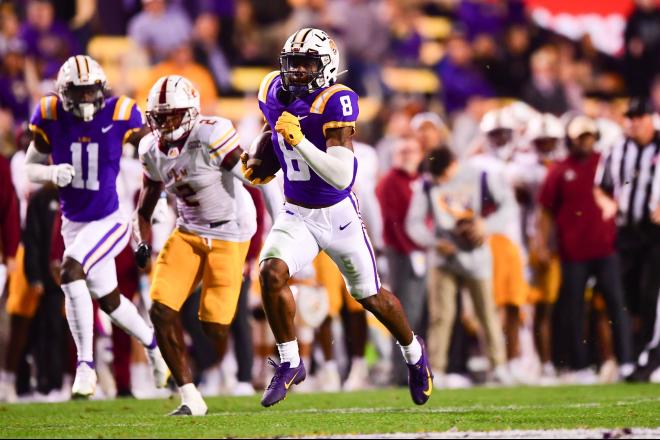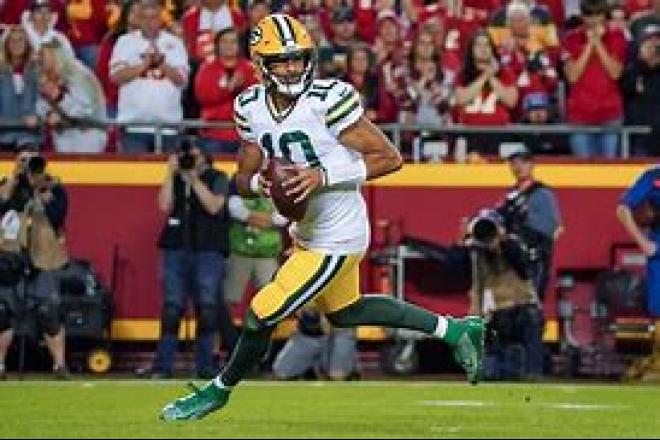In the vast cosmos of fantasy football, where leagues rise and fall like empires, there exists a realm of perpetual narratives—Dynasty Diaries. This series unfolds in the hallowed grounds of dynasty leagues, where dreams of sustained dominance are not fleeting whispers but enduring echoes. In this second chapter, we embark on a journey through key draft selections and reflect on specific players who helped me climb the championship summit.
At the onset of my dynasty journey, my lack of experience in super-flex leagues led to a unique strategy. Drawing from years of single-QB redraft leagues, I initially underestimated the significance of quarterbacks within the super-flex realm. As a result, trading down and prioritizing depth, especially at wide receiver, became the crux of my strategy. The draft unfolded as a cascade, with a deliberate emphasis on securing a premier tight end early and building a robust core around emerging wide receivers. While this strategy ended up being solid, if I had to do it over again I would’ve taken a QB earlier than the 9th round and passed on one or two of the RB’s.
Here’s a review of my roster coming out of the draft:
QB’s: Daniel Jones, Marcus Mariota, Jordan Love, Tyler Huntley
RB’s: Nick Chubb, Saquon Barkley, Leonard Fournette, Antonio Gibson, Melvin Gordon, Pierre Strong, Trey Sermon, Boston Scott, Jerrick McKinnon, Abram Smith, Benny Snell
WR’s: DK Metcalf, DeVonta Smith, Rashaad Bateman, Amon-Ra St. Brown, Garrett Wilson, Skyy Moore, Christian Kirk, Robert Woods, Jarvis Landry, Kenny Golladay, Sterling Shepard
TEs: Kyle Pitts, Tyler Higbee, Evan Engram
K: Cade York
DEF: Cincinnati Bengals
As we traverse the celestial dance of choices that composed my inaugural team, each pick becomes a note in the composition of championship dreams. The players who emerged as keystones in this narrative reveal not only the foresight behind their selections but also the dynamic evolution of a championship-winning squad. Let us step onto the stage of reflection, where Saquon Barkley, DK Metcalf, Kyle Pitts, Daniel Jones, and DeVonta Smith's strategic impact come to life. These players, each with a distinct tale, embody the essence of my draft strategy, offering insights into the artistry of roster building in the ever-shifting landscape of dynasty football.
Saquon Barkley (RB) Pick 3.12:
Pick Reasoning: Despite an injury-prone label, I wanted to stock up on RB depth, and Barkley was the best RB available. With my first two picks at 2.09 & 3.09 I had taken Kyle Pitts and Nick Chubb, and at this point, was looking to fortify my RB position. I knew from my redraft experience that the position has a tendency to dry up pretty quickly and wanted to ensure I had at least two starting options. Since we start 2 RBs in this league, my logic was that I could start both Chubb and Barkley and have a pretty good 1-2 punch for at least year 1.
Results: Barkley maintained his health over the course of the 2022 season and became my de-facto No. 1 running back, as I traded all of the other RB’s on my roster for other players. Barkley helped guide my team to a championship and then I traded him as well in the offseason for multiple pieces in Cam Akers, Najee Harris, & a 2025 2nd round pick.
DK Metcalf (WR) Pick 4.01:
Pick Reasoning: Metcalf's combination of size, speed, and catching prowess made him a cornerstone wide receiver. His upside as a WR1 was pivotal in shaping my WR-heavy strategy. Metcalf was the first WR I took in the draft, and it wasn’t until the beginning of Round 4. At this point, I felt set at both TE with Pitts and RB with Chubb & Barkley, and wanted to start building my WR core. Metcalf was projected as the best WR available, although the real WR steal of the draft wouldn’t occur for me until later when I snatched up Amon-Ra St. Brown in the 8th round.
Results: With Metcalf entering his prime, he was a linchpin for my WR corps. However, after the draft ended and the season went along, I needed a QB badly and had depth at the WR position. To that end, I traded Metcalf, Taylor Heinecke, Carson Wentz, Darrell Henderson, & a 2023 2nd Rd pick for Mac Jones, Rhamondre Stevenson, Bailey Zappe, and Jerry Jeudy. Other than giving up the 2nd Rd pick and Metcalf, I felt this deal helped me overall, as I was able to later flip Stevenson for more assets. Additionally, Jeudy became an integral part of my championship run in 2022. Also, at that time Mac Jones was considered to be an up and coming quarterback, so I liked the upside. However, if I had to do this over again, I’d think twice, as Metcalf is an elite WR and parting ways with the 2nd Round pick ended up not being great.
Kyle Pitts (TE) Pick 2.09:
Pick Reasoning: Identifying Pitts as a future elite tight end, I prioritized securing him early. His potential to redefine the TE landscape was a calculated move to fortify a critical position. My logic was that if I could secure a top young TE, I’d be set at the position in dynasty for years to come.
Results: While my strategy was solid, everything that could go wrong with Pitts did go wrong. Not only did his coaching staff (who’s since been fired) do nothing with him, but he got hurt early in the year and missed most of the 2022 season. Since then I’ve struggled to find a solid TE for my roster. I did, however, end up trading for Michael Mayer, so the hope is that he turns into something. I also ended up trading Pitts after the 2022 season with a 2024 2nd Rd Pick for Diontae Johnson, Dalton Kincaid, & a 2024 1st Rd Pick. Again, the strategy was sound, but I learned it’s best to have 2-3 viable starting TE’s (max) on my roster to help account for injuries like this.
Daniel Jones (QB) Pick 9.12:
Pick Reasoning: Drafted in the 9th round, Jones emerged as an unexpected but impactful QB1. His breakout performance underscored the value of strategic QB depth over star power. At this point I was in desperate need of a QB, as up until now I had not drafted a single one. This strategy was somewhat intentional, as I was thinking that I'd build around my RB's and WR's and save QB for last. My logic was that if I couldn’t get an elite QB (which was true), then I would wait on the position until it became absolutely necessary. Round 9 made it absolutely necessary. I also liked Jones coming into the year, as it would be his first year with a new coaching staff coming over from the Buffalo Bills. My hope was that Jones would increase his rushing totals and have a good 2022 season.
Results: My gamble paid off in a major way, as Jones ended up having a career year both for the Giants and for my fantasy team. He ended up being my starting QB all year, and helped lead me to the fantasy finals and championship. In fact, Jones had such a good year that it increased his value substantially during the offseason, and I was able to trade him away for a package centered around Kyler Murray, Elijah Moore, and Rashee Rice, thus improving at both the QB position and my team overall.
DeVonta Smith (WR) Pick 7.12:
Pick Reasoning: At this stage of the draft, the only other WR on my roster was D.K. Metcalf, whom I had selected in Round 4. The other rounds consisted of all running backs and one TE (Pitts). As a result, Smith was the first of three wide receivers that I took in a row (the other two being Rashaad Bateman and Amon-Ra St. Brown). One of my favorite draft strategies is to go after 2nd & 3rd year wide-outs, and Smith was a perfect fit for this, as he was quietly coming off a 900 yard rookie season. I was gambling that his 2nd year in the league would result in a significant step forward.
Results: This ended up being another excellent gamble that paid off. Since Smith was the first of three receivers in a row that I drafted, I could afford to wait on him a bit. Turned out that he ended up being another lynchpin of my season and made a significant impact in my championship run. He ended up staying on my team for another year, until I traded him at the 2023 trade deadline for a package centered around Tee Higgins. Only 25, there is a very good chance Smith will be good for a long time, so I have my eye on potentially reacquiring him.
The disparity between my initial roster and the present reveals the dynamic nature of dynasty leagues. Trading played a pivotal role in shaping the team's trajectory, with strategic shifts from a heavy WR approach to a balanced roster. The lessons learned highlighted the importance of adaptability, resourceful trading, and the transient nature of player value in the NFL. While all of these players played a key role in helping win a championship in my first foray into the dynasty world, none of them are still on my roster. The ever changing NFL landscape is much more impactful in dynasty leagues compared to redraft, where news on one player can impact a dynasty fantasy roster for years to come.
In spite of this, the season's culmination witnessed my team's evolution—an 8-6 record, a playoff berth as the 6th seed, and eventual league championship in the first year. The transformative strategy of building around young talents, securing a top-tier young TE, and cultivating WR depth alongside multiple RBs proved to be a solid compass pointing toward consistency and contention.
The dynasty draft, a celestial ballet of choices, laid the foundation for a narrative that unfolded with strategic brilliance. The next article in this series will delve into identifying the best fits and strategy for my team for the rookie draft as well as including potentially emerging stars.





